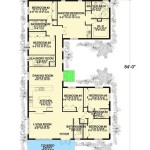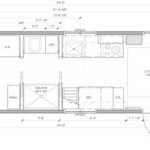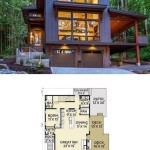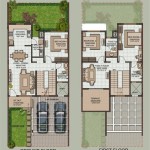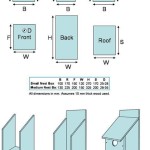Simple 1 Bedroom Apartment Floor Plans With Pictures
The quest for the perfect living space often leads individuals to consider the practicality and affordability of one-bedroom apartments. Characterized by their compact design, these units offer a balance of private and communal areas, making them a viable option for single occupants, young professionals, or couples seeking a minimalist lifestyle. Understanding the various floor plan options is crucial in selecting a one-bedroom apartment that aligns with personal needs and preferences. This article delves into the intricacies of simple one-bedroom apartment floor plans, providing insights and visual examples to aid in informed decision-making.
One-bedroom apartments typically consist of a living room, a separate bedroom, a kitchen (which may be integrated into the living area or distinct), and a bathroom. The square footage can vary considerably, ranging from cozy 400 square feet units to more spacious layouts exceeding 800 square feet. The design of these apartments aims to maximize space efficiency while providing a comfortable and functional living environment. Careful consideration of the layout is paramount, as it directly impacts the usability and overall feeling of the space.
The floor plan serves as a visual representation of the apartment's layout, depicting the placement of walls, doors, windows, and fixtures. Examining various floor plans allows potential renters or buyers to visualize how their furniture and belongings will fit within the space and how they will navigate the apartment on a daily basis. A well-designed floor plan optimizes space utilization, promotes a sense of flow, and enhances the overall living experience.
Key Considerations When Evaluating One-Bedroom Apartment Floor Plans
Several factors should be taken into account when assessing the suitability of a one-bedroom apartment floor plan. These considerations directly influence the functionality and comfort of the living space, impacting the overall satisfaction of the occupant.
Space Efficiency and Layout: The most critical aspect is the efficient use of available space. A well-designed layout eliminates unnecessary hallways or awkward corners, maximizing the usable area for living, sleeping, and storage. Consider the flow of movement between different areas of the apartment. Is the kitchen easily accessible from the living room? Is the bedroom adequately separated from the communal areas to provide privacy and quiet? Open-concept layouts, where the kitchen and living room are combined, can create a sense of spaciousness, but may require careful zoning with furniture to define distinct areas. Conversely, separate kitchens offer more privacy but may feel smaller. The positioning of windows and doors also plays a significant role in the perceived spaciousness and natural light distribution throughout the apartment.
Storage Solutions: Adequate storage is essential in a one-bedroom apartment, where space is often limited. Evaluate the availability of closets, cabinets, and other storage options. Built-in shelving, under-bed storage, and multi-functional furniture can help maximize storage potential. Consider the size and placement of closets in the bedroom, hallway, and entryway. A well-designed floor plan will incorporate storage solutions that are both functional and aesthetically pleasing. Lack of sufficient storage can lead to clutter and a feeling of being cramped, negatively impacting the overall living experience.
Natural Light and Views: The amount of natural light entering the apartment can significantly affect its ambiance and livability. Floor plans that maximize natural light exposure are generally preferred. Consider the orientation of the apartment and the placement of windows. South-facing apartments typically receive the most sunlight, while north-facing apartments may be darker. Large windows can enhance the sense of spaciousness and provide desirable views. However, consider the potential for privacy issues if windows are located close to neighboring buildings or public areas. The presence of a balcony or patio can also enhance the appeal of a one-bedroom apartment, providing an outdoor space for relaxation and entertainment.
Examples of Simple One-Bedroom Apartment Floor Plans
To illustrate the various floor plan options available, consider the following examples:
Example 1: The Linear Layout. This floor plan typically features a rectangular shape with the living room, kitchen, and bedroom arranged in a linear fashion along one side of the apartment. The bathroom is positioned on the opposite side, often near the entrance. This layout is common in older buildings and is generally space-efficient. The bedroom is usually located at the end of the apartment, providing a private retreat. However, this layout can sometimes feel narrow and lack natural light in certain areas.
Example 2: The Open-Concept Design. This floor plan features a combined living room and kitchen area, creating a more spacious and airy feel. The bedroom is typically separated from the main living area by a wall or door, providing privacy. This layout is popular in modern apartment buildings and is ideal for those who enjoy entertaining or prefer a more flexible living space. However, noise and cooking odors can easily permeate the entire apartment, which may be a concern for some individuals.
Example 3: The L-Shaped Layout. This floor plan features a living room and kitchen that are arranged in an L-shape, creating a distinct separation between the two areas. The bedroom is typically located off the living room or hallway. This layout offers a good balance of open and closed spaces and can be particularly appealing to those who prefer a more defined living area. The shape also offers some more interesting design opportunities for furniture and storage.
Example 4: The Studio-Convertible. While technically a studio, some designs feature details that allow for conversion into a quasi one-bedroom. This often involves a larger space with a nook or alcove specifically designed for a bed, which can be partially separated using screens, curtains, or shelving units. This offers a sense of separation without the full commitment of a walled-off bedroom.
These examples are illustrative and various sub-types and variations can be found within each category. Careful examination of the specific floor plan for each apartment is always recommended.
Analyzing Specific Aspects of a One-Bedroom Floor Plan
Beyond the overall layout, examining specific aspects of the floor plan in detail is crucial for making an informed decision.
Kitchen Layout: The kitchen is a critical area, and its layout should be carefully considered. Galley kitchens, where the cabinets and appliances are arranged along two parallel walls, are space-efficient but can feel cramped. U-shaped kitchens offer more counter space and storage but require a larger footprint. Island kitchens provide a central workspace and gathering area but may not be suitable for smaller apartments. The placement of appliances, such as the refrigerator, stove, and dishwasher, should also be considered for ease of use.
Bathroom Configuration: The bathroom layout should be functional and comfortable. Consider the size and placement of the shower or bathtub, toilet, and sink. Adequate storage for toiletries and towels is essential. A well-ventilated bathroom is important to prevent moisture buildup and mold growth. Some one-bedroom apartments may feature en-suite bathrooms, which offer direct access from the bedroom, while others may have a separate bathroom accessible from the hallway.
Bedroom Dimensions and Features: The bedroom should be large enough to comfortably accommodate a bed, dresser, and other essential furniture. Consider the placement of windows and the location of the closet. A walk-in closet can provide ample storage space, while a smaller closet may require more creative storage solutions. The bedroom should be a quiet and private space, conducive to restful sleep. Pay attention to the location of outlets for lamps and other electronic devices.
By thoroughly evaluating these aspects, prospective tenants or buyers can determine whether a particular one-bedroom apartment floor plan meets their specific needs and preferences. Visualizing furniture placement and considering daily routines within the space will further aid in the decision-making process.
Ultimately, the ideal one-bedroom apartment floor plan is subjective and depends on individual lifestyle, preferences, and priorities. By carefully considering the factors outlined in this article and examining various floor plan options, individuals can find a living space that is both functional and comfortable, enhancing their overall quality of life.

Small House Plans Studio One Bedroom 1

House Plans Under 500 Square Feet

Studio Apartment Floor Plans Google Search

Krug Stylish And Simple One Bedroom Atlanta Apartments

Typical Floor Plan One Bedroom

1 Bedroom Adu Floor Plans Designs Layouts Exteriors

1 Bedroom Apartment Floor Plan

25 One Bedroom House Apartment Plans

1 Bedroom Apartment House Plans

Floor Plans Preswick Glen
Related Posts

